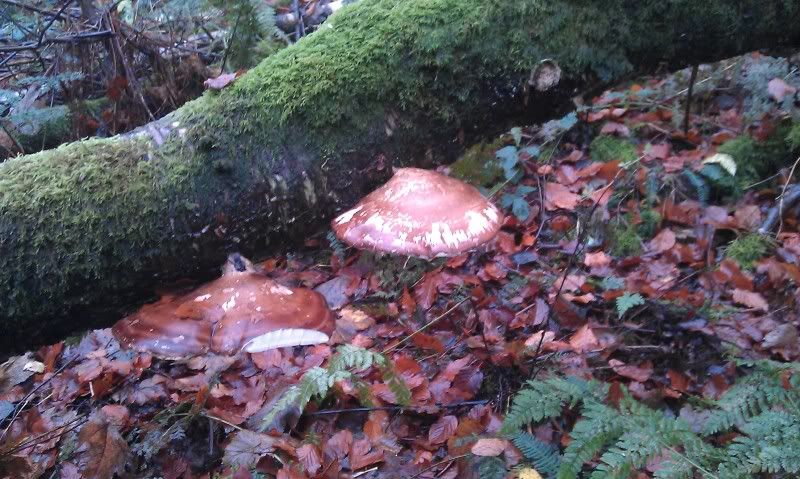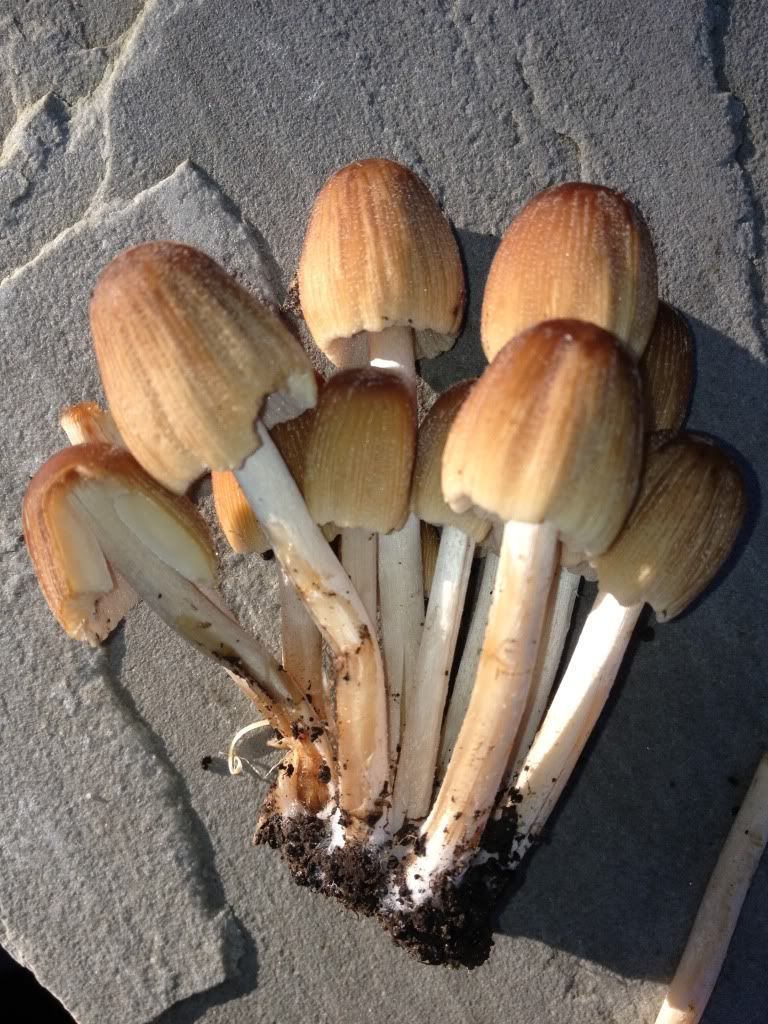I went out for a bit of a fungi forage in the badlands of East Lothian this afternoon and I cam across a couple of very large patches of pretty big mushrooms. The rings were at least 10 feet in diameter and had scores of fruit, each which were between 3 and 8 inches in diameter. These were on the forest floor and the trees were a mix of birch and pine/spruce.
I've taken a couple of pictures of the mushrooms and looking at the Phillips book was thinking that they were some form of Clitocbye (nebularis??)
A few of the fruit clumped together:

The underside of the fruit:

Anyone know what these actually are?
I've taken a couple of pictures of the mushrooms and looking at the Phillips book was thinking that they were some form of Clitocbye (nebularis??)
A few of the fruit clumped together:

The underside of the fruit:

Anyone know what these actually are?







